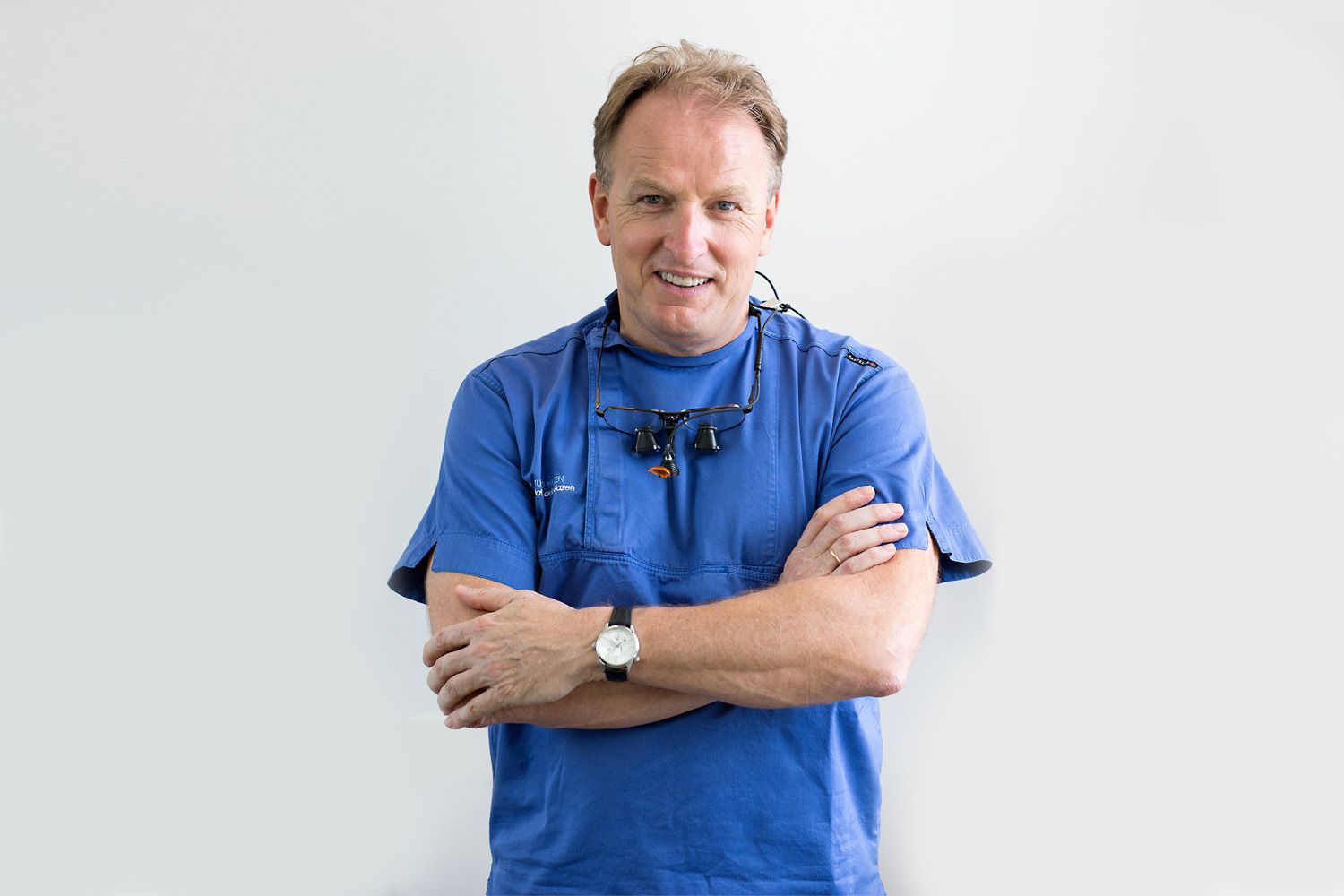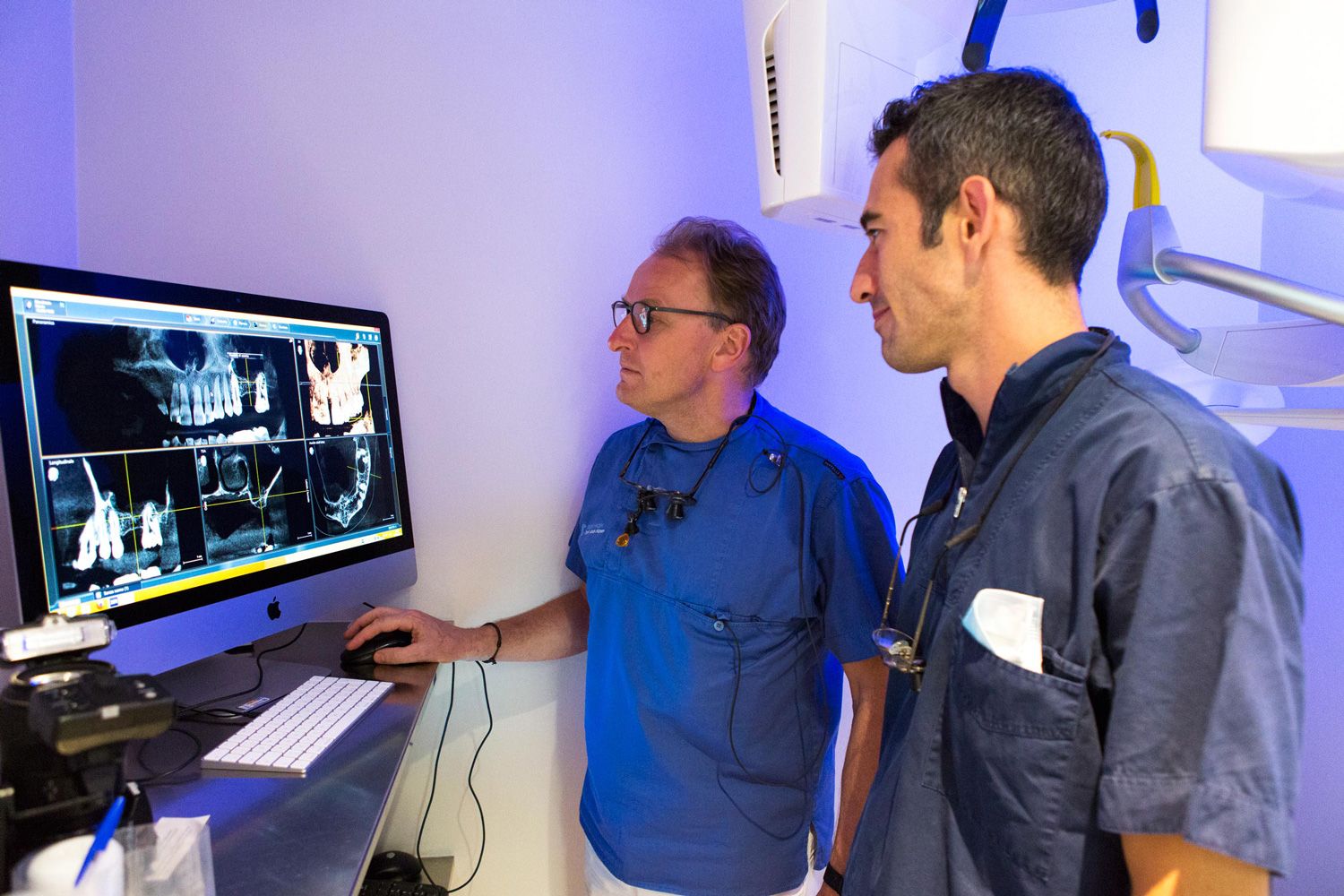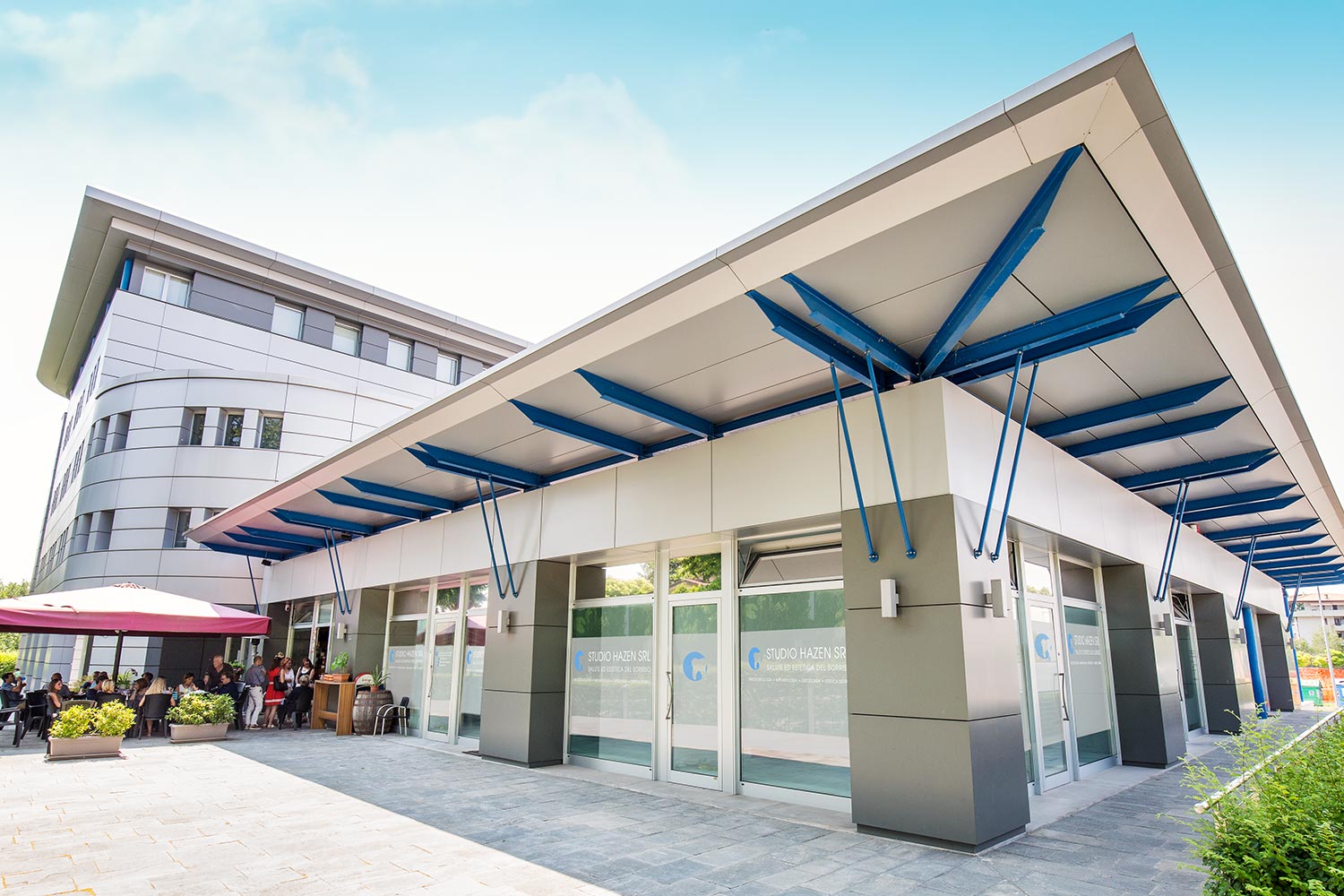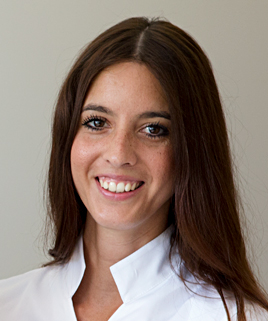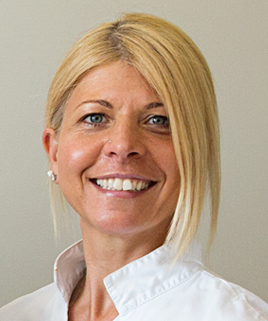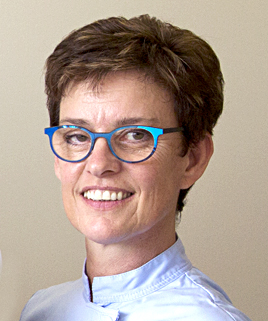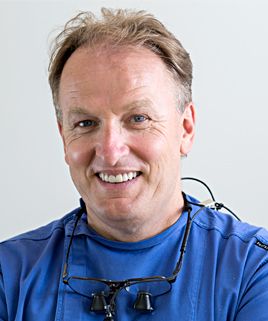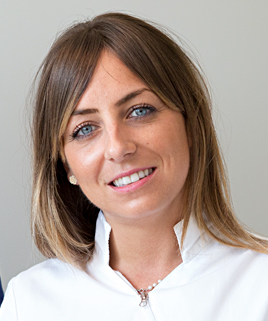ODERZO OFFICE
Our mission is to put a smile on your face
even when you’re thinking of going to the dentist’s.
While you relax, we offer you the best dental treatment and services, cutting-edge techniques and the latest generation of materials.
We want to solve and prevent problems while building mutual awareness of the importance of oral health.
While fully respecting people, the environment and our commitments.
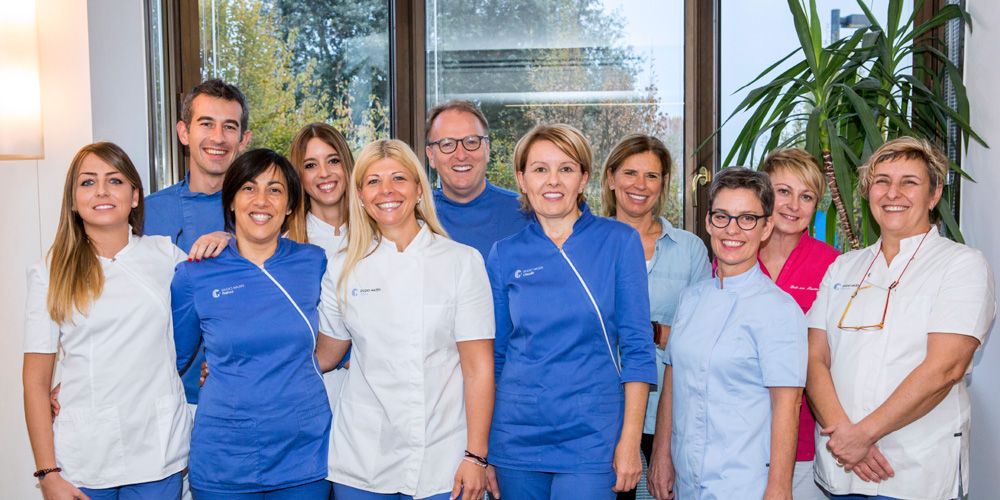
The team
PORDENONE OFFICE
A homely environment,
in Pordenone as well.
360° service, exceptional customer care, a cutting edge office where you can easily relax.
Prevention is essential for oral health, and for a all-round well-being: this is our philosophy.
The dentist role is to cure and to guide the patient as well, aiming to a better oral health.
We are at your complete disposal
with a wide range of services.
Oral hygiene
A healthy mouth is important; keeping it in excellent health is fundamental. In fact, science has proven the connection between gum disease, problems affecting the bone around our teeth (periodontitis) and other, sometimes serious, health problems such as:
- cardiovascular disease (heart attacks and strokes),
- diabetes; people suffering from diabetes run the risk of gingivitis and periodontitis and the latter can influence blood sugar control,
- complications during pregnancy, increased risk of giving birth to premature and/or underweight babies.
This is why we pay so much attention to the removal of tartar, to scaling and to proper oral hygiene at home. There is no other way to keep your gums in perfect health.
More information on this topic is available in the download section.
Periodontics
If the plaque that forms on the surface of your teeth is not thoroughly removed, your gums become inflamed (they become red and swollen and bleed when touched).
This process can be reversed through proper oral hygiene, either at home or at your dental clinic. In no time at all your gums will be as good as new. Nevertheless, if this condition is not treated properly and the bone becomes inflamed and shrinks you have gum disease.
Gum shrinkage is irreversible and can cause, in the initial phase, the tooth or teeth involved to become loose and, in the long run, even to fall out.
Periodontics is the treatment performed to cure this disease. It initially consists in thorough cleaning sessions and then, if this doesn’t solve the problem, in surgery.
Implantology
Nowadays, there are many ways of replacing missing teeth. The most tried and tested method is the one that best imitates natural teeth: an implant in the bone. We have been using this technique successfully for over twenty years. The missing tooth is replaced without involving, or, worst still, damaging nearby teeth.
Even if all the teeth in one, or both, dental arches are missing it’s still possible to have “fixed teeth” again. In many cases, this can be achieved very quickly: thanks to the “Columbus Bridge Protocol”, the fixed teeth can be screwed into place after just 24-48 hours from having fitted 4 implants.
Surgery
In addition to inserting implants, we perform various kinds of oral surgery in our clinic. These include the extraction of wisdom teeth that are not growing properly, gum correction in the event of gum disease and esthetic improvements. More than twenty years’ experience allows us to efficiently solve the oral problems that require surgery.
Pediatric dentistry
Our surgery also takes care of children’s teeth. Our goal is to patiently teach each child how important oral health is. We want their visits to the dentist’s to be pleasant so that they are never afraid of us.
By taking them with you when they are 3-4 years’ old, when mummy or daddy is having her/his six-monthly check-up, they will become acquainted with the clinic so that, when the time comes for them to sit in our “magic chair” for the first time, they won’t hesitate because they know there is nothing to fear.
Orthodontics
Wearing a brace to correct the appearance or functionality of teeth is no longer something that only children do.
An increasingly larger number of adults decide to improve the appearance of their teeth: a beautiful smile boosts self-confidence!
Our expert, Doctor Vaes, will help you make the right choice to solve your problem.
Which is best for you, a fixed brace with ceramic ties or an “invisible” one? There is always an ideal solution for your teeth!
Non-removable tooth replacements and dentures
Nowadays, there are many ways of replacing missing teeth. There are valid alternatives for those who do not want, or cannot have, an implant: non-removable tooth replacements (attached to adjoining natural teeth) or removable dentures.
The first one offers the advantage of being fixed in the mouth as well as ensuring excellent esthetic results, especially since only ceramic with no metal is used.
But even removable dentures, with non-allergenic resins and cosmetic clasps, have allowed many people to smile again.
Cosmetic dental treatments
People are increasingly more demanding regarding their appearance. Thanks to new technologies and to the development of a new generation of dental materials, cosmetic fillings that perfectly match the colour of a patient’s teeth can be performed. Old amalgam fillings belong to the past.
Even crowns with a metal base are now replaced by all-ceramic crowns that eliminate the unsightly “black edge” that used to become visible if the gums receded slightly.
Treatments for joint problems
Making noises or feeling pain when moving the lower jaw or yawning may be indicative of a temporomandibular joint dysfunction (TMD). This dysfunction can have many causes but is usually due to mastication problems caused by missing teeth or by an imperfect match of the two dental arches.
Even “grinding one’s teeth” (bruxism), which is often aggravated by stress, can trigger TMD problems.
The first attempt to treat this problem usually consists in the application of a bite plate, (i.e. a removable intra-oral appliance) that changes normal mastication habits and quickly reduces acute symptoms.
Nevertheless, it is still necessary to simultaneously identify the cause of the problem and decide how to solve it once and for all.
It is important to act quickly. In fact, in the initial phases of arthritis, the dysfunction and its symptoms can be treated quite easily but, if you wait until the temporomandibular joint becomes deformed, arthrosis will set in and the treatment will be more complicated.
Treatments for sleep apnea and snoring
Snoring creates great discomfort, not so much for the snorer but for the person who sleeps with him or her. It can also become a health hazard if accompanied by sleeping apnea, i.e. by interruptions in the breathing process due to an obstructed respiratory tract. A reduction in the air intake means that less oxygen reaches the heart and brain which increases the risk of having a stroke or a heart attack.
Another problem connected to sleep apnea, which is not of minor importance, consists in frequently waking up during the night. The consequences of this can be daytime fatigue, impaired concentration and high blood pressure.
If the bouts of sleep apnea are not very frequent, the problem can be treated by using a splint during the night which modifies the position of the lower jaw, creating more space behind the tongue and improving the air flow.
If the apnea is more frequent and does not depend on breathing obstructions but is caused by the brain (central sleep apnea) the treatment will be decided by the ear, nose and throat specialist.
OSAS (obstructive sleep apnea syndrome) is often wrongly underestimated because it affects between 5 and 10% of the population.
Cerec
Easier.
Faster.
his acronym is short for Chairside Economical Restoration of Estethic Ceramics, an innovative system that reconstructs damaged teeth in a single session and ensures perfect, long-lasting and natural results.
Invisalign
An invisible brace
for adults and teenagers.
“INVISALIGN” is an almost invisible teeth straightening system that gives you guaranteed results without having to wear unsightly metal braces.
Digital Smile Design
When smiling
becomes a pleasure.
Nobody can deny how important front teeth are in a smile.
A nice smile boosts your confidence and makes you feel more self-assured in your social life.
” Today, I caught myself smiling for no reason then I realized I was thinking about you. “
